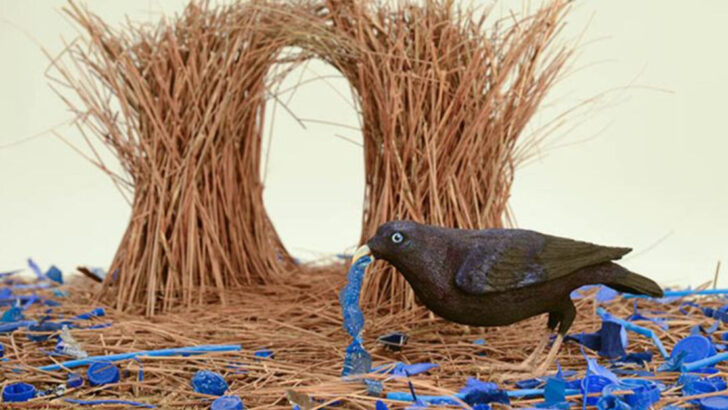Some of nature’s greatest architects don’t have hands—they have paws, beaks, and eight tiny legs. From underwater bubbles to spiral towers made of spit and sand, animals around the world are building homes that would make human engineers jealous. These creatures don’t follow blueprints, but their designs are precise, purposeful, and often jaw-dropping. Think paper nests hanging like lanterns, underwater cities of coral, and perfectly round burrows dug by instinct alone. You’ve heard of beavers and their dams. But wait until you meet the spider that builds doors… or the bird that decorates its home like a designer. Here are 14 unexpected animal architects with skills that might just blow your mind.
Bowerbird
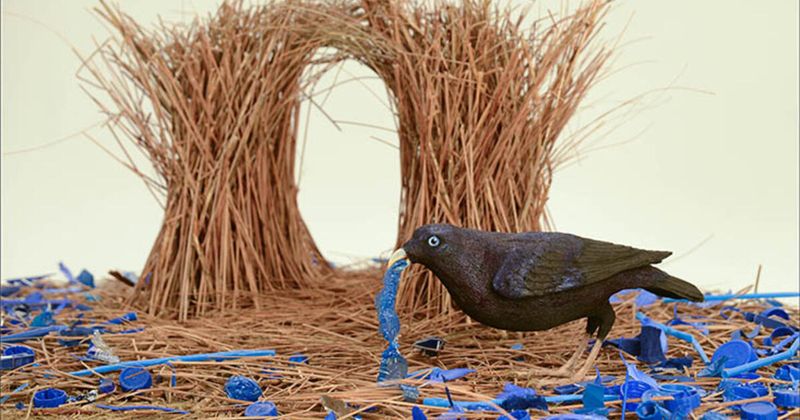
With a penchant for the extravagant, the male bowerbird is nature’s flamboyant architect. Known for building intricate structures called bowers, these birds use colorful objects to attract mates. Unlike nests, bowers are not for raising chicks; they serve as a stage for courtship.
Each bower is a testament to the bird’s artistic abilities, often decorated with flowers, berries, and even man-made items. Observing a bowerbird at work is watching a master at play, meticulously arranging his collection. This elaborate construction is a showcase of both creativity and evolution’s wonders.
Beaver
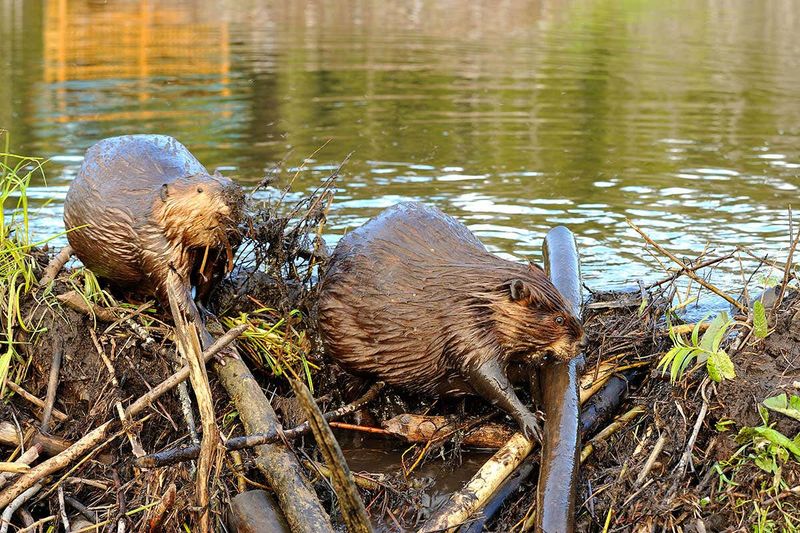
In the realm of animal architects, beavers stand unrivaled for their engineering prowess. These industrious creatures transform landscapes by building dams, creating ponds that become ecosystems teeming with life. Using teeth as tools, beavers fell trees and arrange branches meticulously.
Their lodges, constructed with underwater entrances, provide safety from predators. This aquatic fortress not only serves their needs but also supports biodiversity around it. Beavers’ impact on their environment is profound, showcasing nature’s ability to shape itself. These builders demonstrate the balance between instinct and environmental stewardship.
Termite
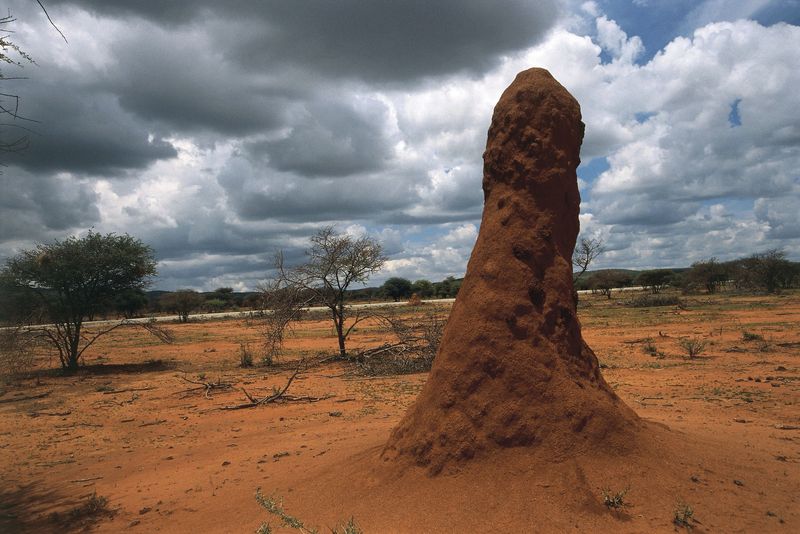
Termites, the unsung architects of the insect world, create towering structures that dot the landscape. These mounds, some reaching over 30 feet, are marvels of engineering. Constructed with soil, saliva, and dung, they regulate temperature and humidity, ensuring optimal living conditions.
Inside, a network of tunnels and chambers supports a thriving colony. The mound’s design reflects a complex social structure, with different castes working in harmony. Termites’ role in aerating soil and recycling nutrients highlights their ecological importance. Their architectural feats inspire admiration for these small yet impactful builders.
Vogelkop Gardener Bowerbird
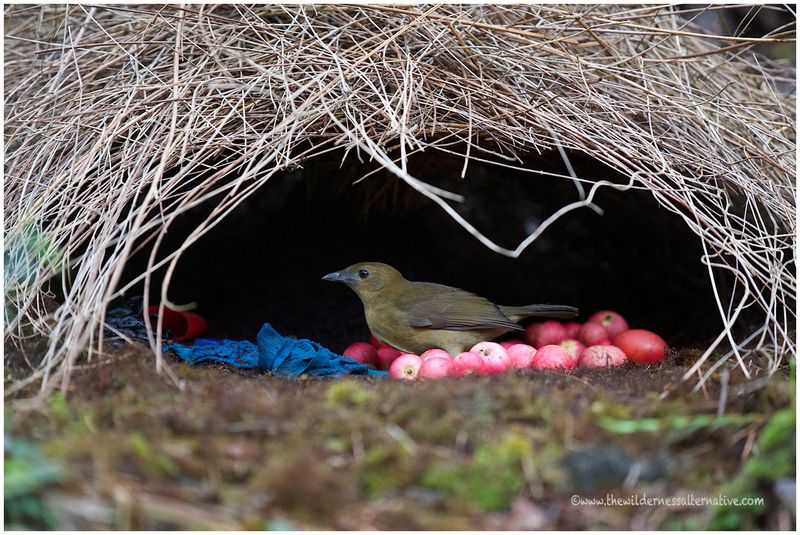
The Vogelkop Gardener Bowerbird, native to New Guinea, crafts elaborate gardens rather than bowers. These avian artists meticulously arrange moss, flowers, and fruits to create stunning displays that captivate potential mates.
Their gardens are masterpieces of symmetry and color coordination, showcasing an eye for aesthetics rarely seen in the animal kingdom. This intricate behavior is driven by the male’s desire to attract a female, using natural resources creatively. Observing these birds is witnessing nature’s art come alive, where survival and beauty blend seamlessly.
Pufferfish
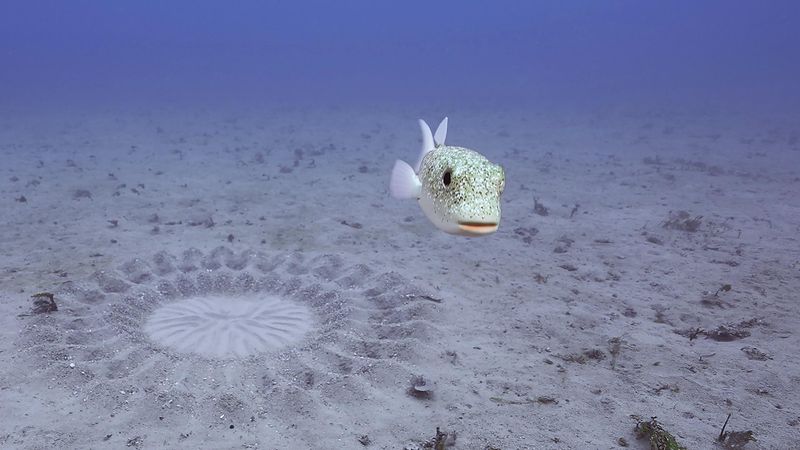
In the depths of the ocean, the pufferfish is an artist of extraordinary skill. Males create intricate sand circles, resembling underwater crop circles, to attract females. These patterns, often six feet wide, are carved meticulously with fins.
The symmetry and detail of these structures demonstrate the fish’s dedication and precision. Each creation is more than a mating ritual; it’s an underwater masterpiece, evidencing nature’s creativity. These designs enhance the ocean floor’s beauty, illustrating life’s complexity beneath the waves. The pufferfish’s work reminds us of the wonders hidden below the surface.
Sociable Weaver

Among the vast array of animal architects, Sociable Weavers stand out for their communal approach. Found in Southern Africa, these birds build massive nests that house hundreds of individuals, resembling apartment complexes.
Constructed with grasses and twigs, these nests provide protection from predators and extreme temperatures. Each chamber serves a family unit, demonstrating cooperation and community spirit. This remarkable social structure highlights the importance of teamwork in nature. The weavers’ nests are a testament to collective effort, where survival and coexistence harmonize beautifully.
Octopus
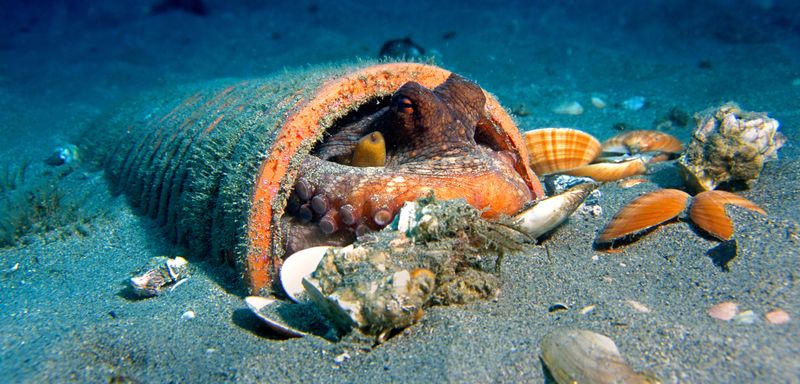
The octopus, with its incredible intelligence, is an architect of the sea. Using rocks, shells, and discarded items, it constructs dens that provide shelter and camouflage from predators. These underwater homes are not only protective but also an extension of the octopus’ resourcefulness.
Capable of manipulating its environment, the octopus showcases problem-solving skills to create its unique habitat. Each den reflects individuality, with some octopuses even displaying preferences for certain materials. This creature’s architectural endeavors highlight the intersection of survival and creativity in the marine world.
Great Crested Grebe
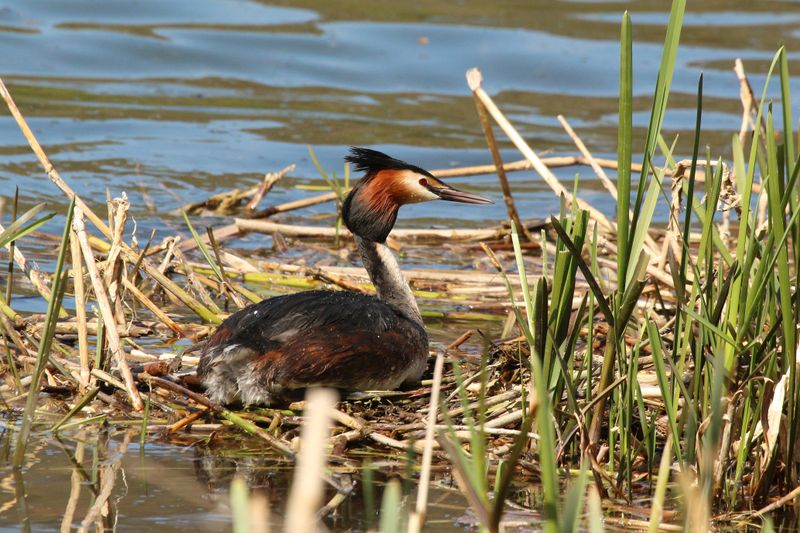
Floating serenely on lakes, the Great Crested Grebe is a master of aquatic architecture. These birds construct floating nests using reeds and aquatic plants, anchored to submerged vegetation.
Their nests, built for buoyancy and warmth, provide a safe haven for eggs and chicks. This ingenuity ensures survival in fluctuating water levels. Grebes’ architectural designs reflect adaptability and innovation, blending seamlessly with their watery world. Observing a grebe at work is witnessing nature’s adaptability, where form and function harmoniously align. These nests are symbols of life afloat.
Mud Dauber Wasp
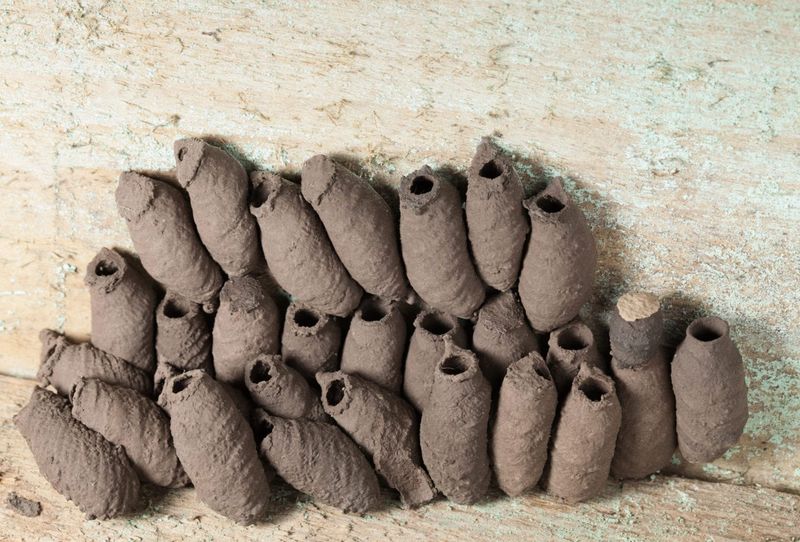
The Mud Dauber Wasp, with its slender body, is a solitary architect of the insect world. Known for constructing nests from mud, these wasps create tubular homes to shelter their larvae.
Each nest, crafted with precision, contains individual chambers stocked with paralyzed prey. This method ensures food for the developing young, showcasing a keen survival strategy. The wasp’s architectural prowess highlights its role in nature’s cycle, where each nest becomes a cradle of life. These mud structures are a testament to the wasp’s industrious nature and meticulous craftsmanship.
Weaver Ant
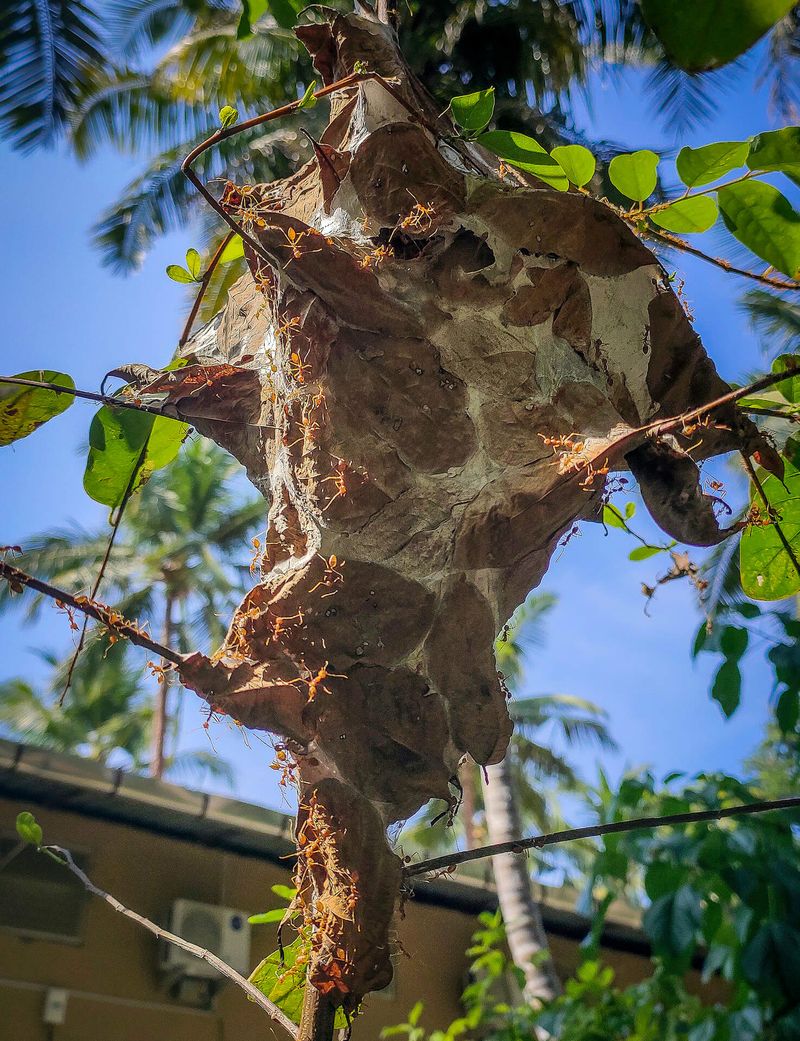
In the tropical canopies, Weaver Ants display teamwork and innovation. Known for weaving leaves together to create nests, these ants use silk produced by their larvae to bind structures.
The nests, suspended in trees, provide protection and a microclimate for the colony. This communal effort exemplifies cooperation and communication, essential for survival. The ants’ architectural skills reflect a complex social hierarchy and division of labor. Their leaf nests, blending seamlessly with the environment, highlight the intricate balance of life in the treetops.
Wasp Spider
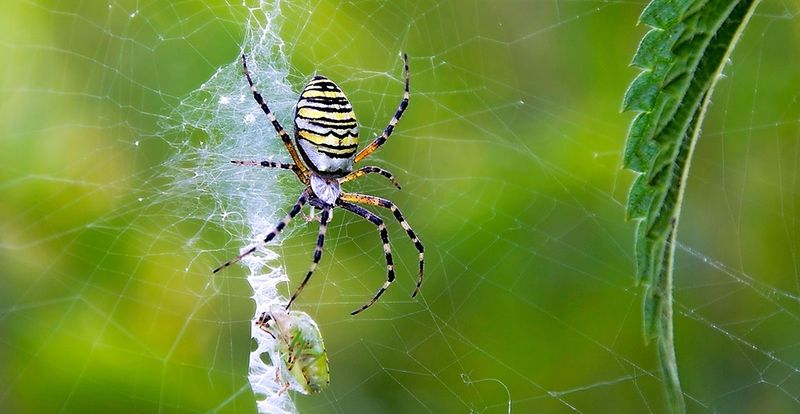
The Wasp Spider, with its striking appearance, is a weaver of beautiful webs. Known for the zigzag pattern, or stabilimentum, in their webs, these spiders create structures that are both functional and mesmerizing.
Their webs serve multiple purposes: capturing prey, signaling presence, and enhancing camouflage. The intricate design highlights the spider’s skill and instinct. These webs, shimmering in the sunlight, embody the elegance and efficiency of natural engineering. Observing a wasp spider at work is witnessing the artistry of survival, where every thread counts.
Paper Wasp
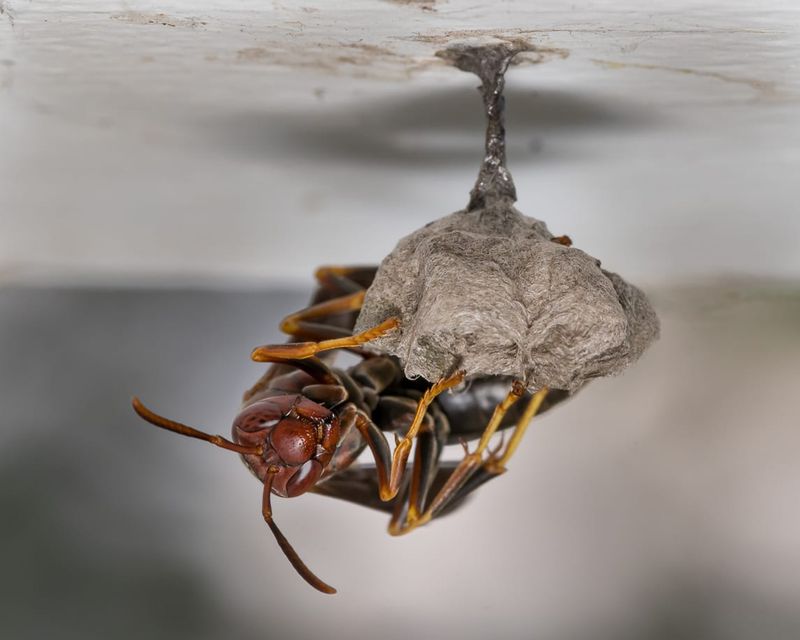
With the precision of a craftsman, the Paper Wasp constructs its nest from chewed wood fibers, creating a papery texture. These nests, often hanging from trees or eaves, house colonies in organized cells.
Each cell, a nursery for larvae, reflects meticulous planning and efficient use of materials. The wasps’ ability to transform wood into paper highlights their innovative survival strategies. These nests are not just homes but also symbols of nature’s resourcefulness, embodying the delicate balance between strength and fragility. Paper Wasps exemplify the harmony between form and function.
Swallow
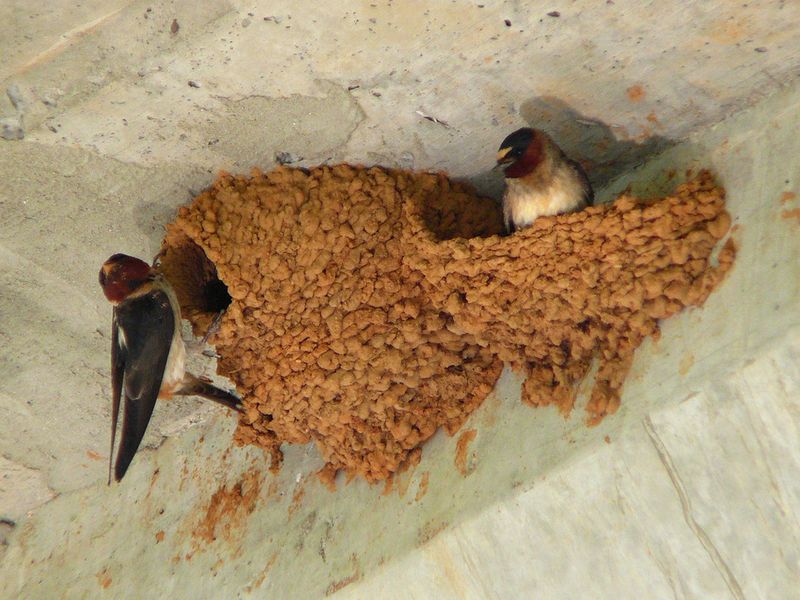
The Swallow, a symbol of grace and agility, is an expert in nest construction. Using mud and grasses, these birds craft cup-shaped nests on cliffs or man-made structures like bridges.
Their nests, lined with feathers for insulation, provide a safe haven for raising young. This adaptability to human environments showcases the swallow’s resilience and resourcefulness. The nests are a blend of practicality and artistry, reflecting the bird’s harmonious relationship with its surroundings. Swallows’ architectural endeavors remind us of nature’s adaptability and enduring charm.
Red Ovenbird
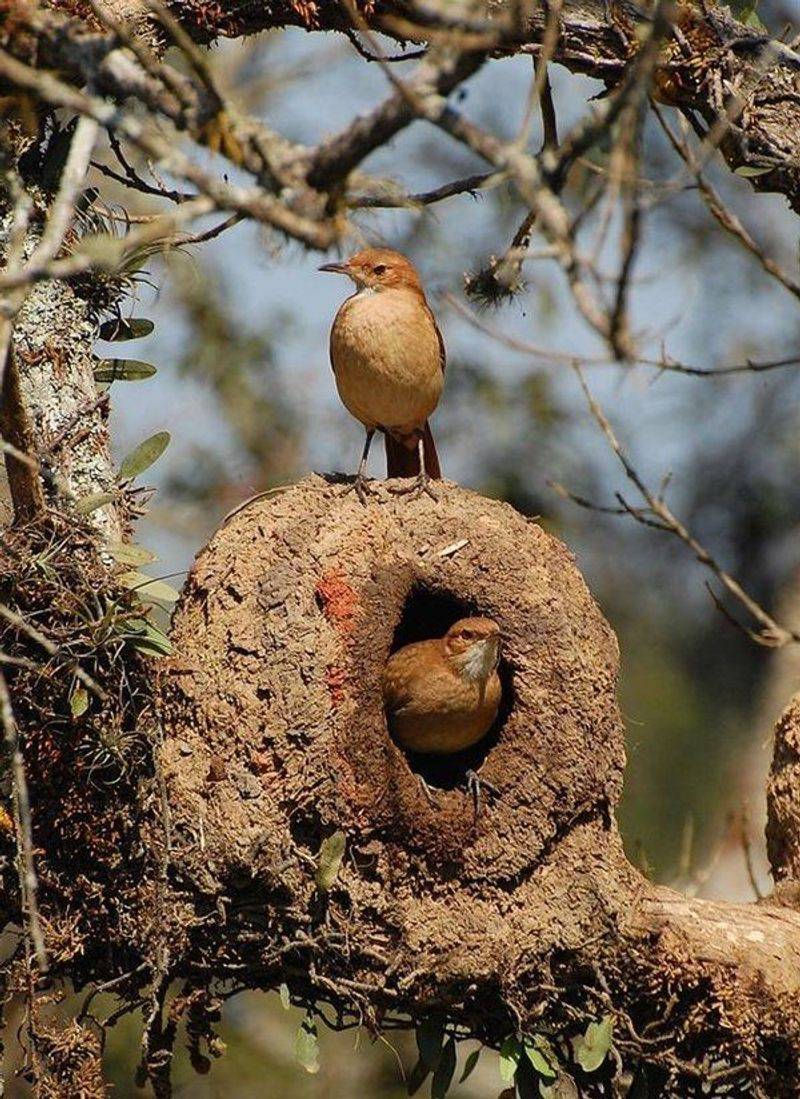
In the dense forests of South America, the Red Ovenbird is an unassuming architect. This tiny avian expertly constructs nests from clay, resembling miniature wood-fired ovens. Using its beak, it carefully molds the clay into a rounded structure, providing a safe haven for its young.
The nest’s design ensures excellent insulation, protecting the eggs from harsh weather. This choice of material offers durability and security, a testament to the bird’s instinctive engineering.
These nests, often perched high in trees, become unique landmarks in the forest, showcasing the bird’s incredible craftsmanship and adaptability.

